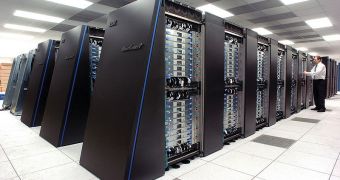High performance computers have surely managed to achieve impressive performance levels, but experts in the industry state there is still a lot more room for such solutions to grow, recent reports suggesting the first 100-petaflop systems could be built in just six years from now, while the first exascale supercomputers are expected to arrive in the 2018-2020 timeframe.
IBM and Cray are leading the packs as both companies have already started building systems which are able to deliver 10-petaflop of computing power.
In addition, IBM is even building a 20-petaflop system for the Lawrence Livermore National Laboratory in Livermore, California which is expected to go live in 2012.
“Everything is moving along according to Moore's law, so things are doubling every 18 months, roughly. Computer makers in 2017 will have 100PFLOPS systems and [ExaFLOPS-class] systems between 2018 and 2020.
“All of these things are dependent on funding. This will happen if the funding is in place for those machines," said Jack Dongarra, a computing expert at the University of Tennessee.
As InformationWeek reports, Dave Turek, VP of deep computing at IBM, seems to agree with these predictions as he also believes that the first exascale computers will be available in 2019.
Currently, the title of the world's fastest computer is held by the Chinese Tianhe-1A system which is able to deliver 2.57 petaflops of computing power.
This is made possible thanks to the use of 14,336 Xeon X5670 processors and 7,168 Nvidia Tesla M2050 general purpose GPUs.
Much like the Tianhe-1A, experts predict that future supercomputers will use a heterogeneous architecture that will pair together high performance central processing units with highly-specialized parallel accelerators, such as AMD FireStream, Nvidia Tesla or Intel MIC.
This approach enables high-performance computer builders to deliver massive amounts of processing power without having to give up on energy efficiency.

 14 DAY TRIAL //
14 DAY TRIAL //